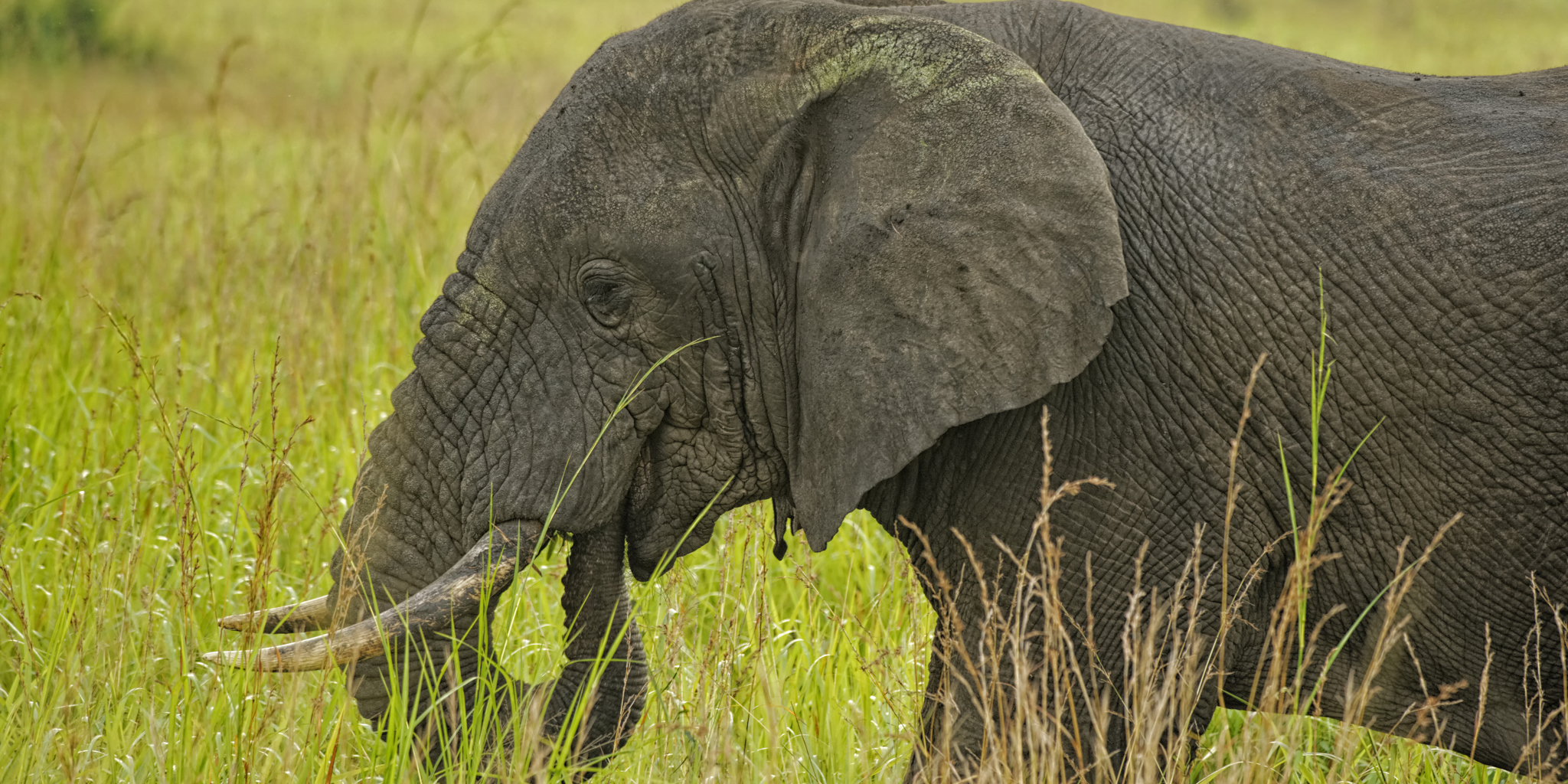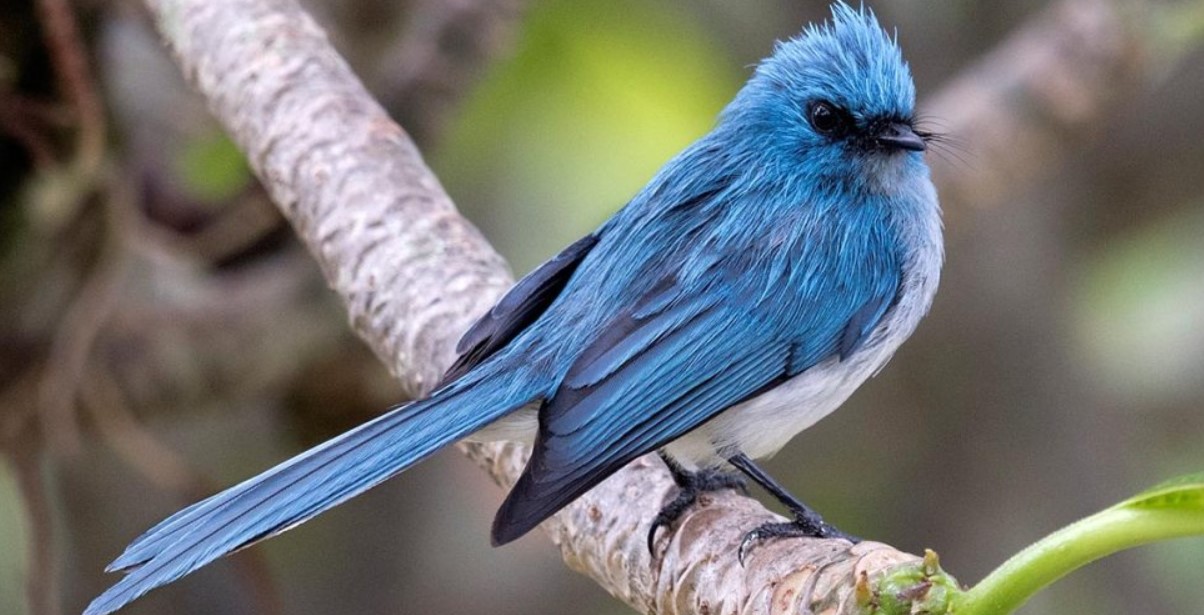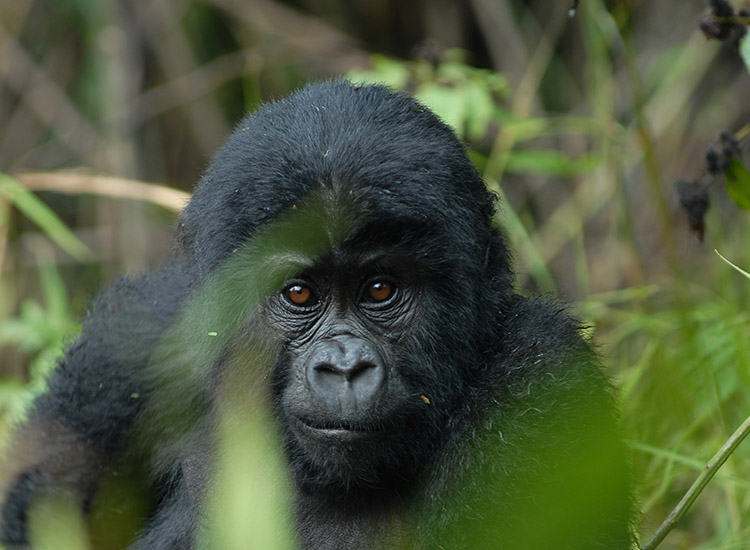What is Queen Elizabeth National Park famous for? Queen Elizabeth National Park it is located…
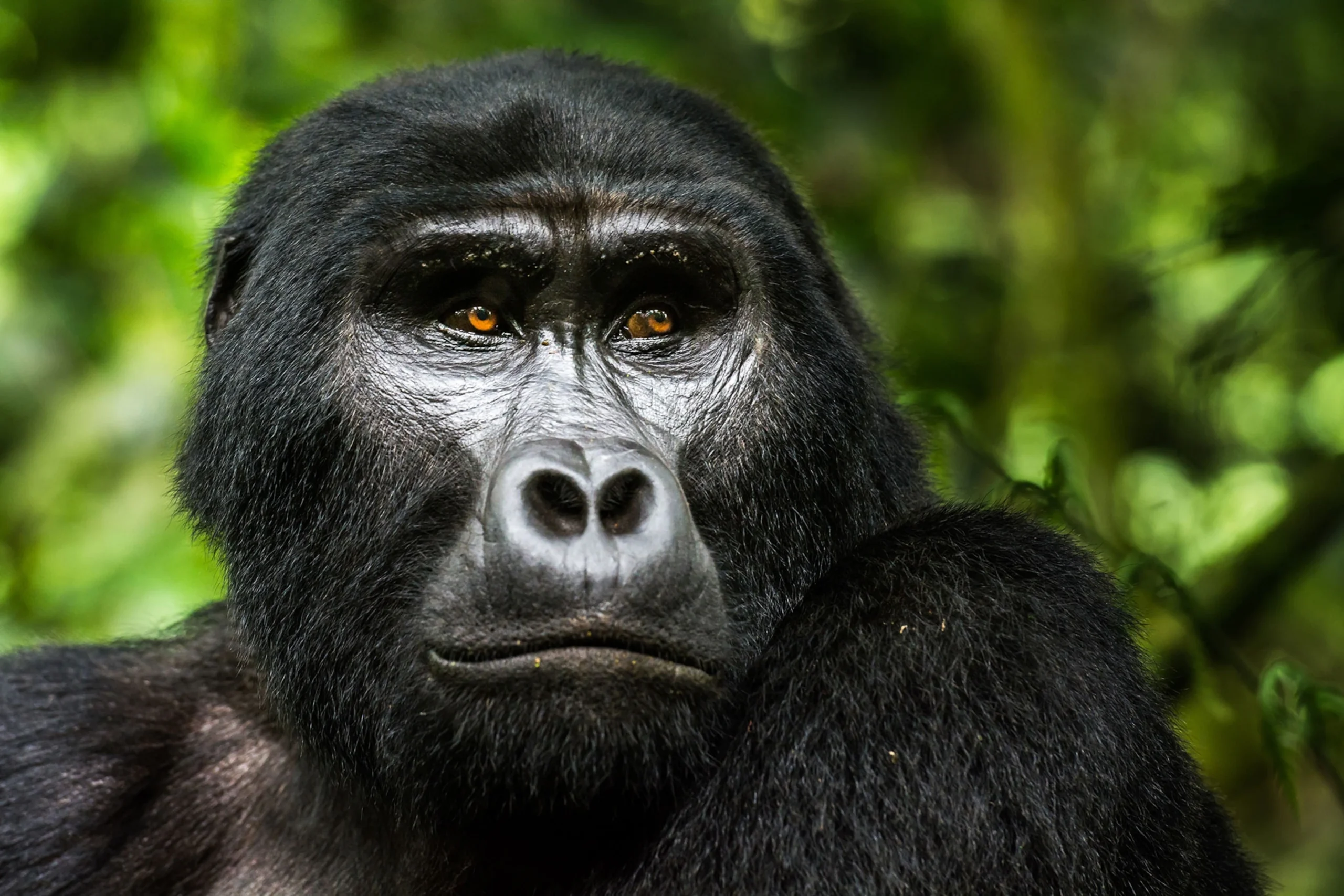
Mountain Gorillas
Mountain Gorillas : The mountain gorilla (Gorilla beringei beringei) is the largest living primate in the world and can only be found in East and Central Africa. Its thicker, longer fur permits it to survive only in hard settings at high altitudes and in extreme cold. It is bigger and stronger than other gorilla species.
Just like human thumbprints, each mountain gorilla’s nose print is distinctive. Although some gorillas are omnivores and consume some small animals for their flesh, gorillas are the largest members of the ape family and are herbivores, which means they eat mostly vegetation. As a result, they are primarily found in the tropical woods of equatorial Africa. Gorillas spend the majority of their time on the ground, while they can occasionally be seen deep within the forests.
The eastern and western gorillas, as well as perhaps four or five subspecies, are all members of the genus Gorilla. After chimpanzees and bonobos, gorillas are regarded as the closest living relatives to humans. This is so because, depending on the comparison, they have 95 to 99% of the same DNA as humans.
There are two main species of gorillas at the moment: the western and eastern gorillas. Each of these species has two subspecies. The well-known mountain and lowland gorillas are both members of the eastern gorilla species. The western gorilla species, on the other hand, consists of cross-river gorillas and western lowland gorillas. The sole distinction between these two species is their size and the noises they make to communicate. Their residence or the location of their habitat may also be different. The destruction of their natural habitats connects all gorillas, even though the eastern gorilla is normally bigger than the western gorilla.
MOUNTAIN GORILLAS
The Eastern gorilla species (Gorilla beringei), which includes mountain gorillas, is described above. They can be found in the Virunga Mountains of Congo, Rwanda, and Uganda. In the area, there are about 1000 mountain gorillas. Due to habitat destruction/encroachment for agricultural and human settlement, as well as poaching for bushmeat, their numbers have decreased by more than 70% over the last two decades. The IUCN classifies mountain gorillas as a “endangered species” as a result.
One of the most fascinating animals on the earth is the mountain gorilla. Because of how much they resemble us, humans, in look and social structure, encounters with these big apes are regarded as among the best African wildlife experiences. Only Rwanda, Uganda, and the Democratic Republic of the Congo are home to mountain gorillas.
More than half of the surviving mountain gorillas are found in Uganda, where mountain gorilla sightings are most frequent. Due to the fact that tourists can trek these great apes in Mgahinga and Bwindi Impenetrable National Parks, Uganda Gorilla Safaris have become more and more popular. Additionally, mountain gorillas are present in Virunga National Park in the
Congo’s Democratic Republic and Rwanda’s Volcanoes National Park. The dense black fur of mountain gorillas sets them apart from the brownish western and eastern lowland gorillas. In comparison to their lowland cousins, they also have shorter arms.
Uganda Gorilla Trekking
Trekking through Uganda’s tropical forests to observe mountain gorillas in their native habitat is known as “gorilla trekking.” The majority of tourists visit Uganda for its breathtaking safari destinations and go gorilla trekking. The highlight of any trip to Uganda is going gorilla trekking, and many tourists opt to travel to Uganda primarily because of the mountain gorillas.
In Uganda, Bwindi Impenetrable Forest National Park and Mgahinga Gorilla National Park are the main locations for gorilla trekking.
Bwindi Impenetrable Forest National place, which has 22 habituated gorilla families and is the greatest place for travellers to see gorillas in their natural habitat, is the most well-known safari site for gorilla trekking in Uganda. Along with 348 bird species, over 120 mammal species, and 111 species of reptiles are present in the park.
Mountain gorillas are educated to get acclimated to humans through a procedure known as “gorilla habituation” before they are made available to visitors for trekking. It can take two to three years for gorillas to become accustomed to humans, during which time scientists make daily visits to a known group of wild gorillas. They gain greater knowledge about the characteristics and habits of particular gorillas. Each gorilla eventually receives a name as they get to know the scientists. Scientists will stage a simulated exercise with a small group of visitors, which may include scientists and members of the media, once they are certain that these mountain gorillas can be walked. A gorilla family becomes available for hiking after successfully completing a mock exercise.
Rwandan Gorilla Trekking
The most popular tourist activity in Rwanda’s Volcanoes National Park is gorilla trekking, where there is a very high likelihood of spotting mountain gorillas. In order to find one of Rwanda’s gorillas, gorilla trekkers must hike through thorny bamboo woods and steep mountain slopes.
Congo gorilla trekking
A trip to Virunga National Park wouldn’t be complete without seeing a mountain gorilla, one of the most endangered primates on the planet. There are eight habituated gorilla families in Virunga National Park, with the Kabirizi family being the most prevalent and largest with 32 individuals. No matter which gorilla troop you track, gorilla trekking typically starts with a briefing in the early morning.
Trekkers are guided by Park Rangers to the gorilla family’s location after the briefing. It can take anything from one to four hours to locate the group. You have an hour to watch and record the group members as they feed, dress, and take care of the kids.
COST OF GORILLA TREKKING IN AFRICA
The gorilla permit, housing choices, travel time to parks, and method of transportation all play a significant role in determining the cost of a gorilla trekking safari. Gorilla trekking is fairly pricey when compared to other African wildlife safari activities.
Cost of a gorilla permit in Uganda; since a permit is required to engage in gorilla trekking, the price of the gorilla permit has a significant impact on the price of gorilla trekking in Uganda. For the duration of the year, the gorilla trekking permit currently costs 300,000 UGX for East African citizens and $800 for foreign non-residents who are not East African inhabitants (Uganda, Rwanda, Kenya, and Tanzania).
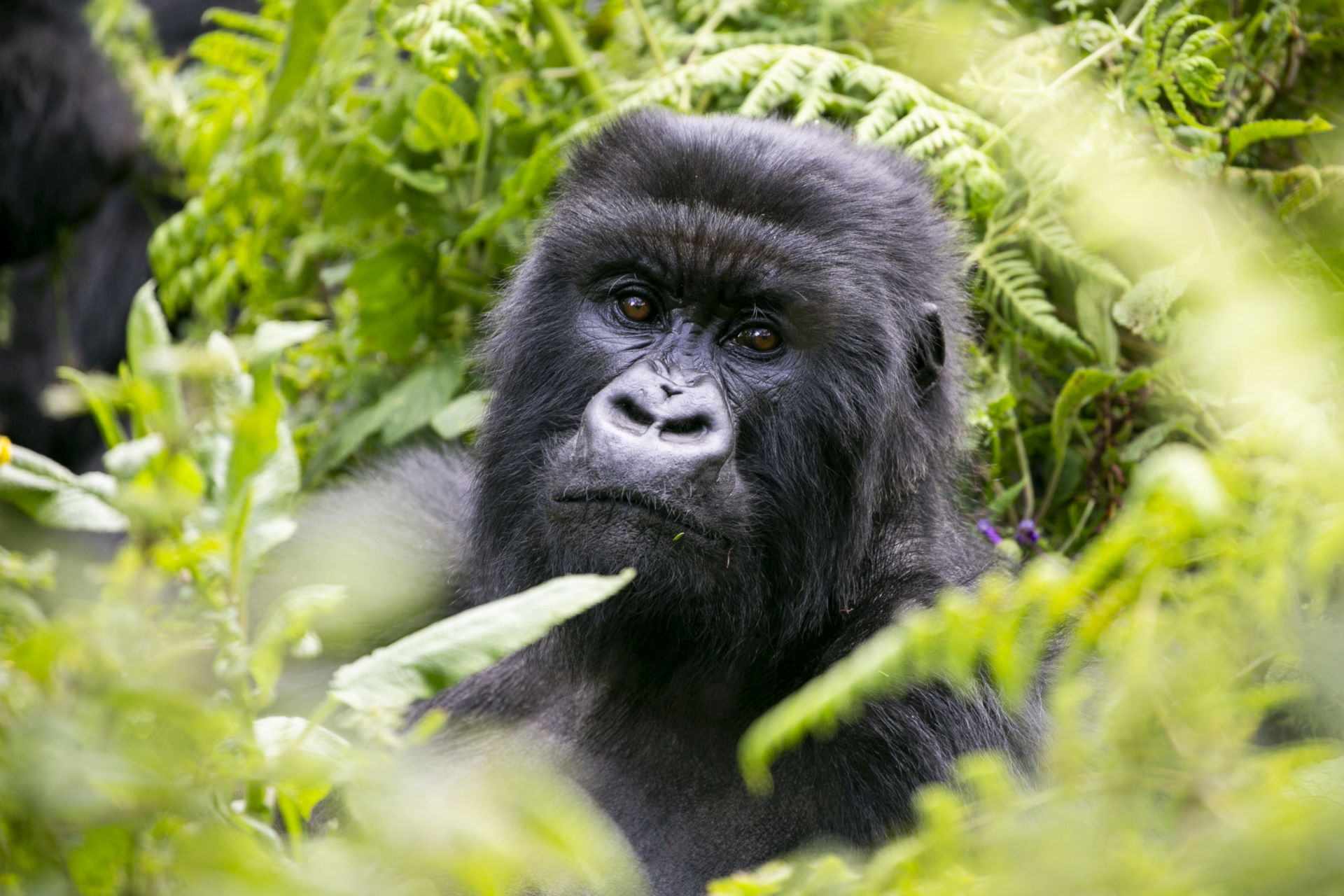
Foreign non-residents must pay $1,500 for the Gorilla Habituation Experience permit or pass; foreign residents in East Africa must pay $1,000; and East African citizens must pay 750,000 UGX.
Rwandans and East African residents pay nothing for gorilla licenses, while foreign tourists must fork up USD 500 each. Only the Rwanda Development Board is authorized to provide gorilla permits in Rwanda.
Cost of gorilla permits in the Democratic Republic of the Congo; if you’ve always wanted to meet the cuddly giants, gorilla permits to Virunga National Park only cost USD $450.
Other Gorilla Species
Cross River Gorillas
According to the January 2017 census, there are only about 250 Cross River gorillas left in the world. Primarily found in Cameroon and Nigeria are these gorillas. They were found in 1904 by Gustav Nachtigal, who gave them the name of the river that divides these two nations.
Threats to Cross River gorillas include diseases spread by humans, hunting, and habitat degradation. According to estimates, more over half of them perished from human illnesses including malaria and Ebola.
Both nations must work together to stop poaching, spread the word about the population decline, and create a safe haven for the remaining Cross River gorillas if they hope to save them.
The Western Lowland Gorillas
Among the great apes, western lowland gorillas are among the most vulnerable. There are thought to be only about 100,000 western lowland gorillas left in the world, and their numbers are declining as a result of habitat loss and poaching. The exact number of western lowland gorillas is unknown because they inhabit some of Africa’s most remote and dense rainforests. These creatures can be found in Cameroon, the Central African Republic, Congo, Equatorial Guinea, and Gabon.
Western lowland gorillas are slightly smaller than other gorilla subspecies and have reddish chests and brown-gray coats. Additionally, they have bigger heads, smaller ears, and more pronounced brow ridges. The western lowland gorilla population has been dwindling despite its size. As was previously said, during the past 20 to 25 years, poaching and disease have caused a more than 60% decrease in the number of gorillas. Scientists predict that it would take 75 years for the population of western lowland gorillas to recover, even with the removal of all threats.
However, due to deforestation and war, there is little hope for these countries to recover anytime soon. Poaching poses a serious threat to them since it causes the population to decline by killing them for bushmeat or as bycatch.
Gorillas of the Eastern Lowlands
The largest of the four gorilla subspecies is the eastern lowland gorilla, also referred to as Grauer’s gorilla. Its small nose, large hands, and stocky body set it apart from other gorilla species. Like other gorilla subspecies, eastern lowland gorillas eat mostly fruit and other herbaceous materials despite their huge size. Both lowland and mountain gorillas in the Democratic Republic of the Congo have suffered as a result of years of civil strife.
The lowland tropical rainforests of eastern DR. Congo are home to the eastern lowland gorilla. Nearly 50 years ago, its range was 8,100 square miles, but it has since gradually decreased to only cover 4,600 square miles. There may be only 13% of this subspecies’ historical range left now. In the middle of the 1990s, there were close to 17,000 eastern lowland gorillas, but biologists estimate that the population has decreased by more than 50% since then. It has been difficult to count the animals precisely due to the unrest in the area.

